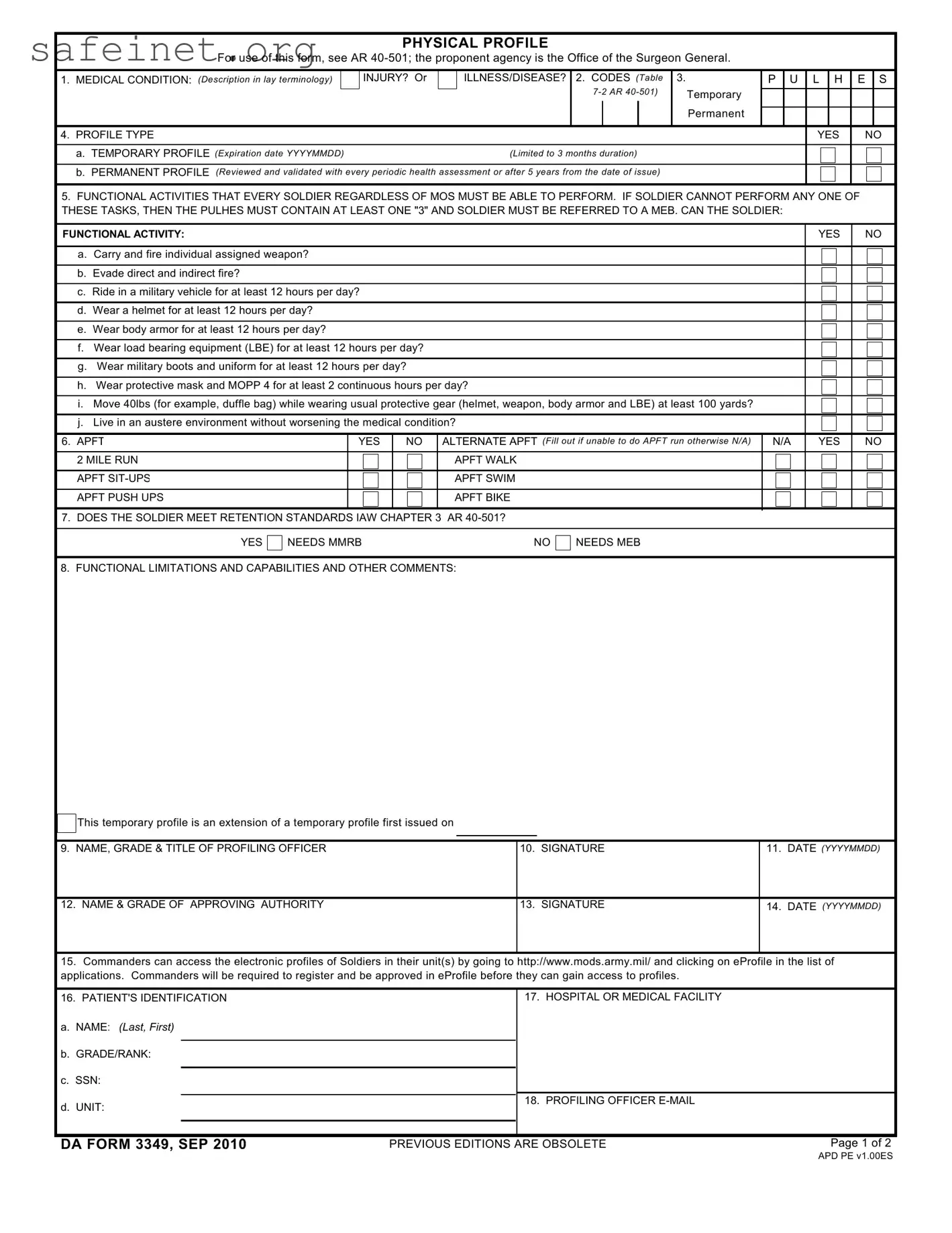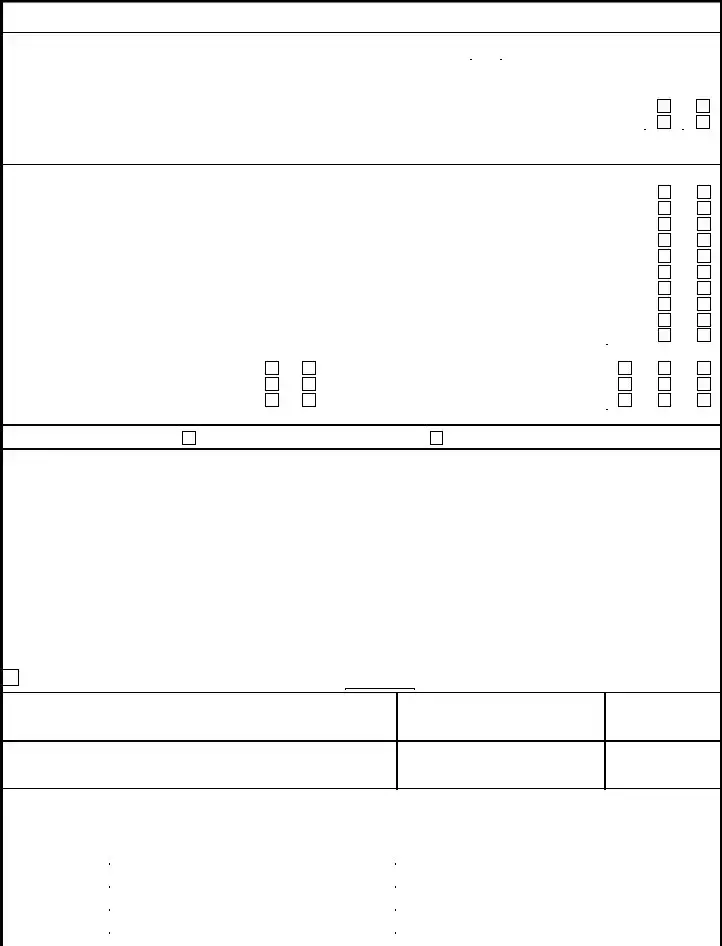The DA 3349 form is similar to the DD Form 2807-1, known as the Report of Medical History. Both documents collect detailed medical information about service members. The focus of the DD Form 2807-1 is on the soldier’s past medical history, including conditions, treatments, and medications. In contrast, the DA 3349 emphasizes the soldier's current medical profile and functional capabilities. Each form plays a crucial role in assessing a service member's fitness for duty and ensuring appropriate medical care.
Another related document is the DD Form 2808, titled Report of Medical Examination. This form captures the results of a physical examination performed by a medical professional. While the DD Form 2808 deals with the outcomes of an examination at a specific point in time, the DA 3349 looks at a soldier's ongoing medical conditions and how they affect current readiness. Both forms are used to determine a soldier's eligibility and retention in the military.
The NATO Medical Lightweight Document (NATO STANAG 6001) is also similar. This document categorizes the medical status of military personnel for deployment and combat readiness across NATO member countries. Like the DA 3349, it assesses medical capability and outlines any restrictions related to performance in operational settings. The NATO document, however, standardizes information for international military cooperation, while the DA 3349 is specific to the U.S. military context.
The Army Medical Readiness Evaluation Tool (AMRET) is another comparable document. AMRET provides a comprehensive evaluation of a soldier's medical readiness status, helping commanders understand the overall health of their troops. Both AMRET and the DA 3349 address factors affecting a soldier's ability to serve, though AMRET offers a more detailed analysis covering a wider array of health metrics and deployment concerns.
Additionally, the DA Form 4950, also known as the Medical Evaluation Board (MEB) Checklist, has similar objectives. The MEB Checklist is used when a soldier requires an evaluation for medical issues that may impact their military career. Like the DA 3349, it helps identify functional limitations and guides the medical evaluation process. However, the MEB Checklist is more focused on long-term assessments and decisions regarding a soldier's continuation in service.
Finally, the DD Form 769, known as the Physical Fitness Review, shares some traits with the DA 3349. This form tracks a soldier's physical fitness and any accommodations necessary to maintain performance standards. While the DA 3349 emphasizes medical profiles and limitations, the DD Form 769 focuses more on fitness measures, providing insights into how well a service member meets the physical requirements of their role.



